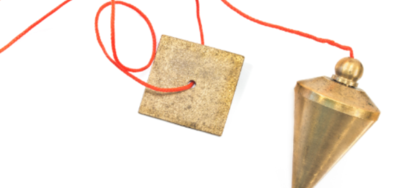

I then use the foam board to set my mortar pails on so I don’t have to reach down so far. From there I can reach almost 3 feet high and roll around to get to mortar, sawdust, and cordwood without getting up. The pieces of blue foam board that are taped together I use to sit on for the first 2 rows on the floor. “Here are some more tricks I use to speed up the cordwood laying process and make it easier on the body. Has been through several storms and barely flaps.” I used the Tyvek that was around the house for the winter and just pulled it out and screwed 2 lattice strips on the bottom so I would have something solid to tie to scaffolding. “This setup has worked very well to keep Sun and rain off my walls and give me quick access to outside of walls for pointing etc. Tracy Lee, master cordwood builder, suggests the following for site prep. Setting up a work site for maximum efficiency. You don’t need much, but it stops cold air from entering the building at the window placement sites.ġ0. The foam will grab and hold the sawdust and the wood. This type of closed-cell foam allows the insulation cavity to be sealed tightly, so there is NO settling of sawdust. Closed Cell Foam to reduce air infiltration. Then fiberglass has been stuffed into the insulation space and finally, a bead of mortar is placed and tuck-pointed on the outside.ĩ. In the picture above, a bead of mortar has been placed on the inside.

Here are a few ways folks have succeeded. Mortaring “under the top plate” is very putzy and necessary. One of the most important places to stop your insulation from settling and creating a thermal nose bleed is when you are finishing a wall section that has been post framed. Mortaring “up” to a top plate or window box. Notice how the post is notched to “take” the weight of the LVL’s and whatever might sit upon them.Ĩ. Two LVL’s spliced in the middle of a post for secure anchoring. R-value for a 16″ wall is R-24 as tested by the University of Manitoba Engineering Department.ħ. If you have a 16″ wall and you have a post framework, the measurements are 3 inches of mortar (outside and inside) and 10 inches in the center cavity. Mortar-Insulation-Mortar Keeps your mortar beads even. This peeling spud with a long handle allows you to put your legs and back into the peeling process. This will eliminate a primary check and reduce shrinkage.Īn excellent way to finish off a cordwood wall and smooth out all the mortar is to use a 2″ paintbrush. Split larger logs into pieces and then put them back together in the wall. Cliff will move the mason’s line up the wall as he makes progress (notice he has already set the roofing nails in 12″ increments).Īs you build the wall, you can site “down” or along the masons line. Note the masons lime for keeping the horizontal level, the vapor barrier, the grey insulation and the outside double wall.
#PLUMB BOB TRICKS HOW TO#
Mason Lines let you level your cordwood by looking “down the line.”Ĭliff Shockey (double-wall inventor) demonstrating how to build the inside portion of a double wall. Saves time and gives you a quick way to keep it all in proper order. Every row, swing the plumb bob & lightly tap the logs in or out. Drill a deck screw into the top plate and hang the swinging plumb bob on the screw. The trick is to take a straight 2 x 4 and drill a hole in the top. This idea is courtesy of Don Gerdes (engineer) who devised it to help keep the walls in his cordwood home straight. Usually, a plumb bob is hung on a string to show vertical plumb. Keeping your wall level? Try using a swinging plumb bob.Otherwise, throw away the bad level, or at least tape over the offending bubble.Top 10 Cordwood Tips, Tricks and Hacks to help you build better with cordwood. Levels with replaceable vials can be adjusted.If the tool is accurate, the bubble should fall in exactly the same place. Simply set it on a flat surface and note where the bubble ends up.How to Calibrate a Spirit Levelįor a level to do its job, it must be well calibrated. Only then can you be sure your work is on the level. For that, you need a tool with a bubble vial, which can rest on your workpiece or butt up against it. Laser tools are great for layout work, but their fleeting lines aren't much help when you have to physically check the positioning of an object. At the high-tech end are laser levels, which project perfectly level or plumb lines onto a surface. The most basic such tool is a spirit level, which indicates level and plumb with a bubble inside a liquid-filled vial. Without this, you can't build a house that works well or looks good-not to mention hang kitchen cabinets or trim out a door.

A level is a tool used to determine whether a surface is horizontal (level) or vertical (plumb).


 0 kommentar(er)
0 kommentar(er)
